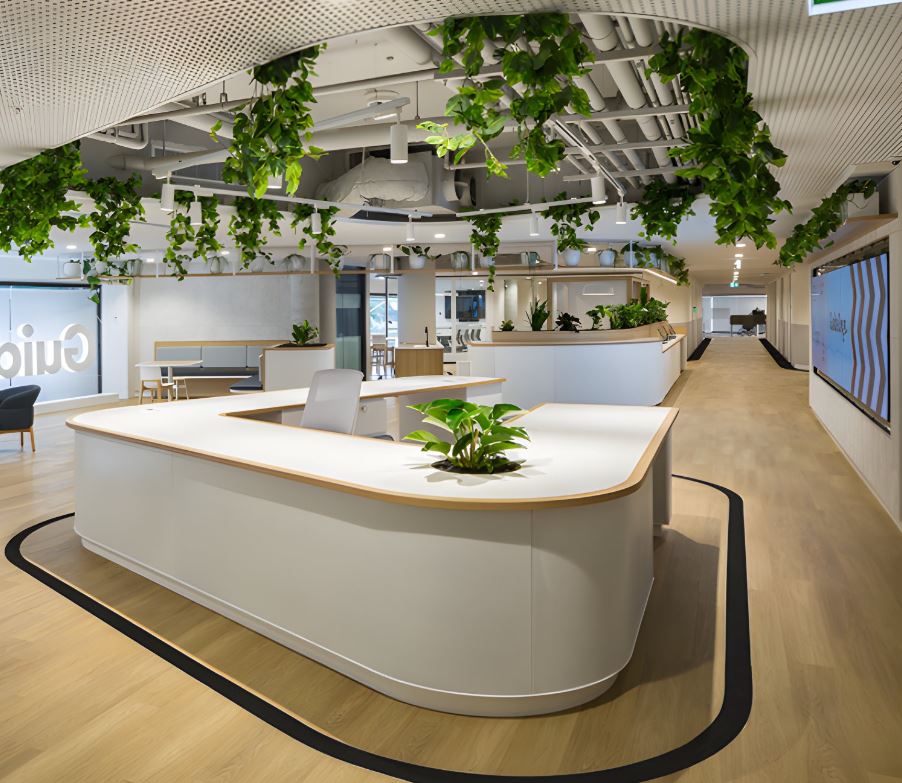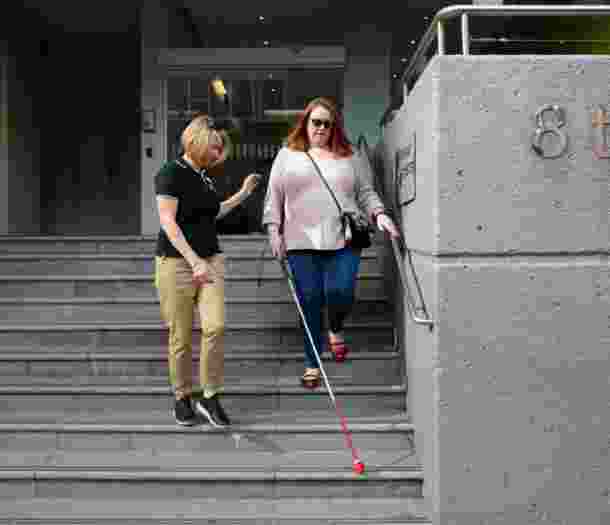Ready to continue?
Seems like you have filled this form earlier. Let’s pick up where you left off.
Making buildings more accessible

Ensuring places and spaces are accessible is crucial to achieve a more inclusive society. Every person, regardless of disability, has a right to have access to public places. The Disability Discrimination Act (DDA) makes it unlawful for public places to be inaccessible to people with a disability.
How easy a building is to navigate often depends on how accessibility was considered in its design. However, we can improve a building’s accessibility in numerous ways, either during the initial planning phase or through retrofitting an existing building.
For example, the Guide Dogs NSW/ACT office, a flagship premises at St Leonards completed in 2022, shows what is possible when accessible building design is considered.
The space, shown in the image above, was designed to be a state-of-the-art accessible facility that showcases best practice, an inclusive work environment that embraces and enables diversity. It was designed with accessibility at top of mind, but it also showcases how accessible features can be seamlessly incorporated into a beautiful and intuitive design.
Work with us to make your building more accessible
Australian Standards apply to the design of certain parts of a building, such as ramps, lifts, car parking, signage, and sanitary facilities. However, architects, building designers and property developers should aim not just to meet these standards, but exceed them.
Guide Dogs NSW/ACT is focused on the functional aspects of accessible buildings for people who are blind or have low vision. This means our recommendations often go beyond what the Australian Standards cover.
We have the expertise to provide you with advice and recommendations to make your planned or existing building more accessible for everyone, specialising in solutions for people with blindness or low vision.
For more information about accessible buildings for people who are blind or have low vision, contact us about our Access and Technology Consulting service.
Addressing outdoor and streetscape access issues in the community
Guide Dogs NSW/ACT are experts in accessibility, including the way people who are blind or have low vision move around the environment. We are best placed to ensure your streetscape is safe and accessible for people of all abilities, including people with low vision or blindness.
Inaccessible streetscapes are dangerous and disorientating, especially for people who are blind or have low vision. Common dangers include:
- Poorly defined or designed pedestrian crossings, shared zones and footpaths raise the risk of collision with vehicles.
- Footpath obstructions pose tripping hazards.
- Incorrectly installed tactile ground surface indicators are confusing to navigate and make hazards harder to identify.
We work to address accessibility issues with streetscapes and outdoor spaces at both individual and systemic levels. For example, Guide Dogs NSW/ACT, Blind Citizens NSW, People With Disability Australia and Inner West Council collaborated to undertake consultation and research to develop the Pathways to Inclusion document.
This document is designed to assist Councils to address access issues in the community, as identified by people with blindness and low vision, by providing practical, actionable advice. The Pathways to Inclusion document is freely available for councils to download and use. Access the Pathways to Inclusion document here.
Wayfinding for people who are blind or have low vision
Wayfinding includes methods and information that people use to navigate through an outdoor or indoor environment and reach their destination.
At Guide Dogs NSW/ACT, we can help you design wayfinding solutions that allow people who are blind or have low vision to access your space comfortably. These can include:
- Advice on building uninterrupted paths of travel with access to all facilities.
- Guidance around making signage prominent and legible to people who are blind or have low vision.
- Support in designing landmarks and lighting to provide distinct and easily recognizable features which serve as reference points, guiding people to their destination.
- Experience with Bluetooth technology, including beacons which give navigation prompts in indoor environments where GPS does not function.
Resources for welcoming Guide Dogs
Guide Dogs Welcome Signage
Identify your business as Guide Dog friendly.
Guide Dog Toileting Areas
Learn how to identify and design appropriate and accessible Guide Dog toileting spaces.
Access and Technology Consulting
Through our Access and Technology Consulting service, we provide personalised advice to businesses and industries to ensure that our community is accessible to people with low vision or blindness, while also complying with federal and state standards and legislation.
